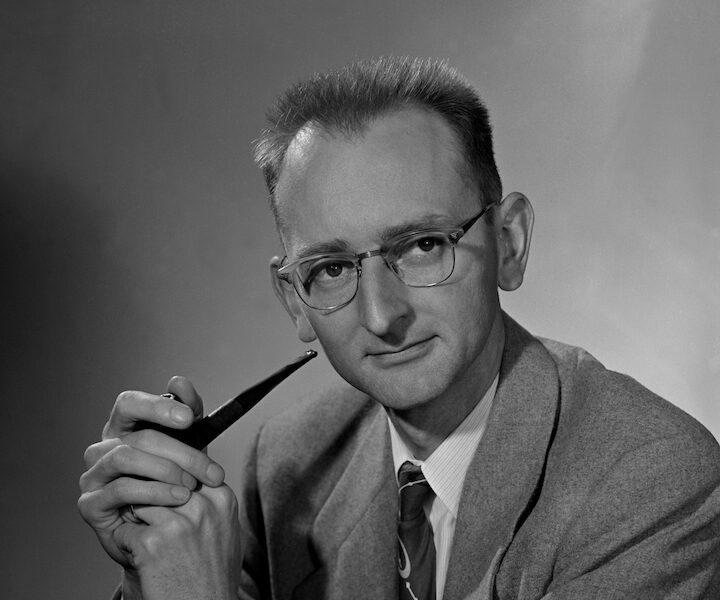Owen Chamberlain was born in San Francisco on July 10, 1920. His father was W. Edward Chamberlain, a prominent radiologist with an interest in physics. His mother’s maiden name was Genevieve Lucinda Owen.
He obtained his bachelor’s degree at Dartmouth College in 1941. He entered graduate school in physics at the University of California, but his studies were interrupted by the involvement of the United States in World War II. In early 1942 he joined the Manhattan Project, the U.S. Government organization for the construction of the atomic bomb. Within the Manhattan Project he worked under Professor Emilio Segrè both in Berkeley, California, and in Los Alamos, New Mexico, investigating nuclear cross sections for intermediate-energy neutrons and the spontaneous fission of heavy elements. In 1946 he resumed graduate work at the University of Chicago where, under the inspired guidance of the late Professor Enrico Fermi, he worked toward his doctorate. He completed experimental work on the diffraction of slow neutrons in liquids in 1948 and his doctor’s degree was awarded in 1949 by the University of Chicago.
In 1948 he accepted a teaching position at the University of California in Berkeley. His research work includes extensive studies of proton-proton scattering, undertaken with Professor Segrè and Dr. Clyde Wiegand, and a important series of experiments on polarization effects in proton scattering culminating in the triple-scattering experiments with Professor Segrè, Dr. Wiegand, Dr. Thomas Ypsilantis, and Dr. Robert D. Tripp. In 1955 he participated with Dr. Wiegand, Professor Segrè, and Dr. Ypsilantis in the discovery of the antiproton. Since that time he has taken part in a number of experiments designed to determine the interactions of antiprotons with hydrogen and deuterium, the production of antineutrons from antiprotons and the scattering of pi mesons.
He is a fellow of the American Physical Society and was awarded a Guggenheim fellowship in 1957 for the purpose of doing studies in the physics of antinucleons at the University of Rome. He was appointed Professor of Physics at the University of California, Berkeley, in 1958.
In 1943 he married Beatrice Babette Copper. He has three daughters and one son.
© the Nobel Foundation 1960
